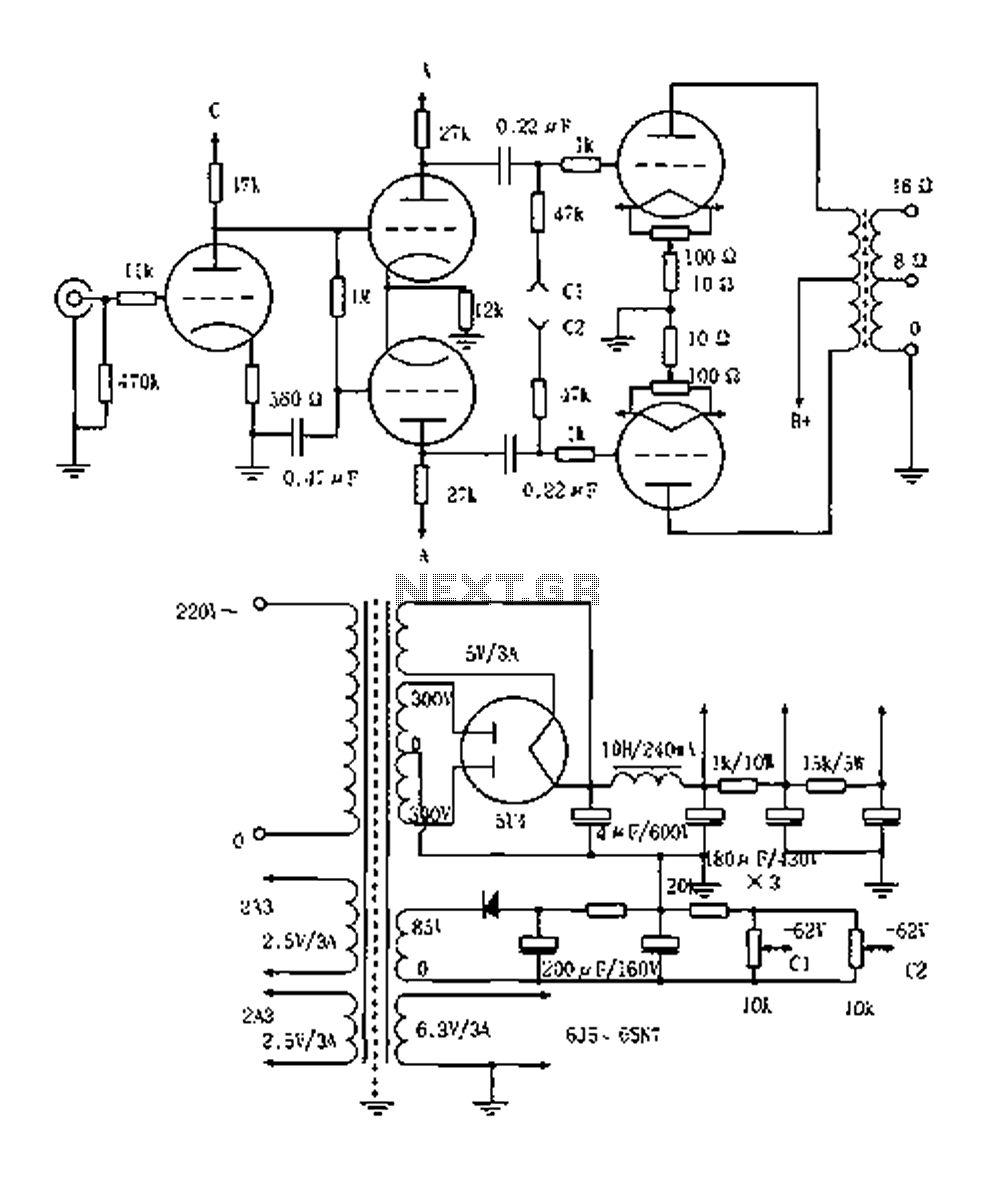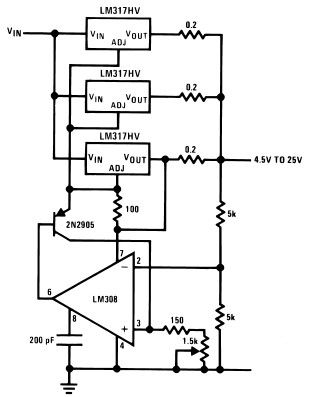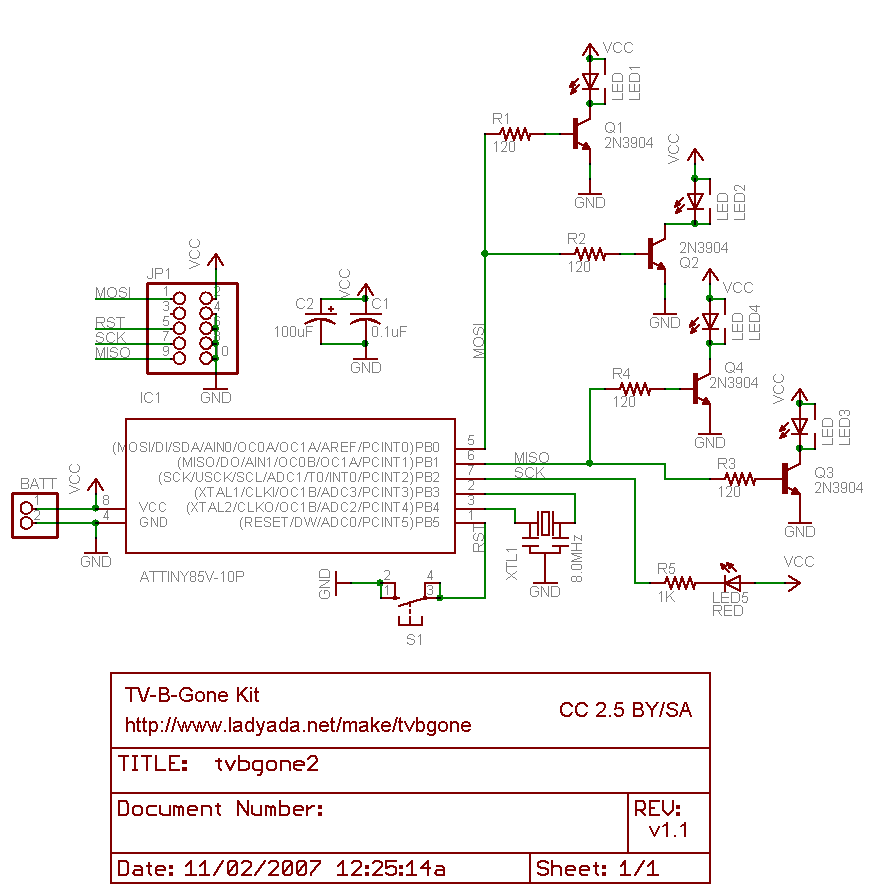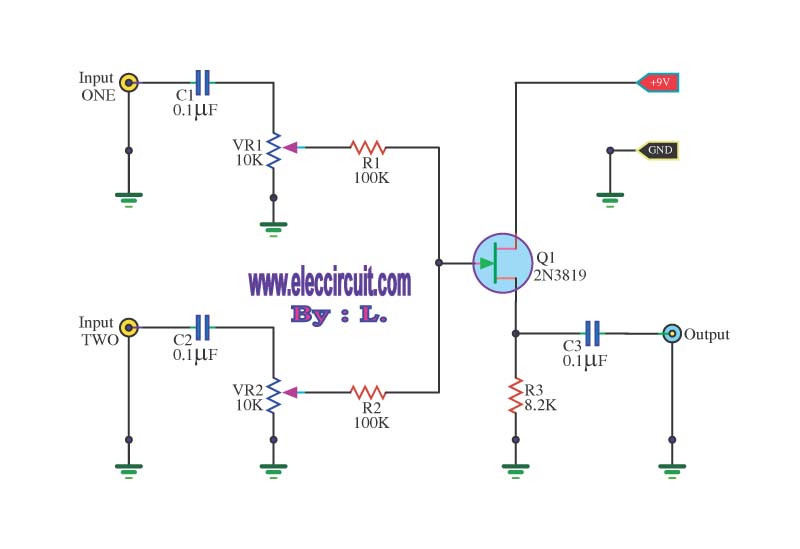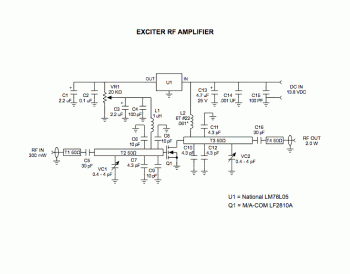
Expand integrated three-terminal regulator block circuit output current method

Expand integrated three-terminal regulator block circuit output current method
The integrated three-terminal regulator is a versatile component commonly used in power supply circuits to provide a stable output voltage. This regulator typically consists of three terminals: input, output, and ground. The primary function of this device is to maintain a constant output voltage despite variations in input voltage and output load current.
To expand the output current capability of a three-terminal regulator, several methods can be employed. One common approach is to use external pass transistors. By connecting a high-current NPN or PNP transistor to the output terminal of the regulator, the overall current capacity can be significantly increased. The base of the transistor is controlled by the output of the regulator, allowing it to amplify the current while maintaining the desired voltage level.
Another method involves using multiple regulators in parallel, ensuring that each regulator shares the load current equally. This configuration requires careful design considerations, such as balancing resistors, to prevent any single regulator from being overloaded. Additionally, thermal management becomes crucial, as increased current can lead to higher heat dissipation.
In practical applications, it is essential to consider the input and output capacitance of the regulator to ensure stability and transient response. Bypass capacitors at the input and output can help filter noise and improve performance. The layout of the circuit is also important; short traces and proper grounding techniques can minimize voltage drops and enhance reliability.
Overall, expanding the output current capability of an integrated three-terminal regulator involves careful selection of external components and thoughtful circuit design to achieve the desired performance while ensuring safety and efficiency.Expand integrated three-terminal regulator block circuit output current method
The integrated three-terminal regulator is a versatile component commonly used in power supply circuits to provide a stable output voltage. This regulator typically consists of three terminals: input, output, and ground. The primary function of this device is to maintain a constant output voltage despite variations in input voltage and output load current.
To expand the output current capability of a three-terminal regulator, several methods can be employed. One common approach is to use external pass transistors. By connecting a high-current NPN or PNP transistor to the output terminal of the regulator, the overall current capacity can be significantly increased. The base of the transistor is controlled by the output of the regulator, allowing it to amplify the current while maintaining the desired voltage level.
Another method involves using multiple regulators in parallel, ensuring that each regulator shares the load current equally. This configuration requires careful design considerations, such as balancing resistors, to prevent any single regulator from being overloaded. Additionally, thermal management becomes crucial, as increased current can lead to higher heat dissipation.
In practical applications, it is essential to consider the input and output capacitance of the regulator to ensure stability and transient response. Bypass capacitors at the input and output can help filter noise and improve performance. The layout of the circuit is also important; short traces and proper grounding techniques can minimize voltage drops and enhance reliability.
Overall, expanding the output current capability of an integrated three-terminal regulator involves careful selection of external components and thoughtful circuit design to achieve the desired performance while ensuring safety and efficiency.Expand integrated three-terminal regulator block circuit output current method
